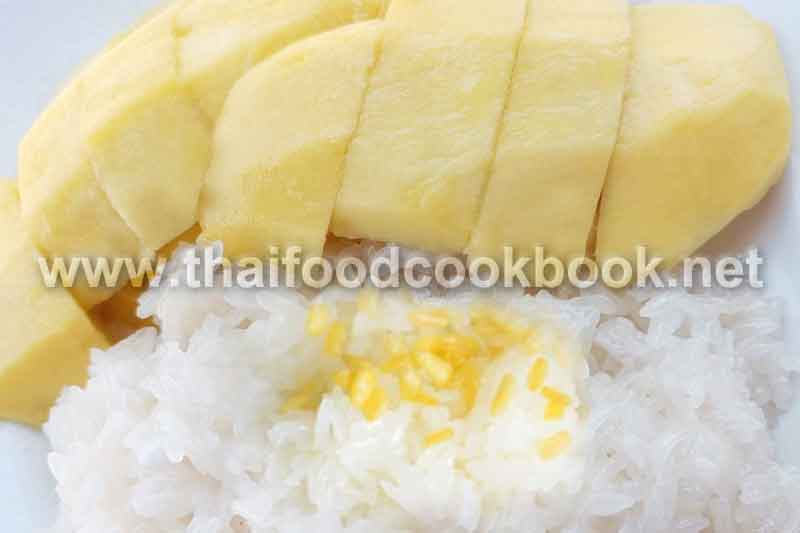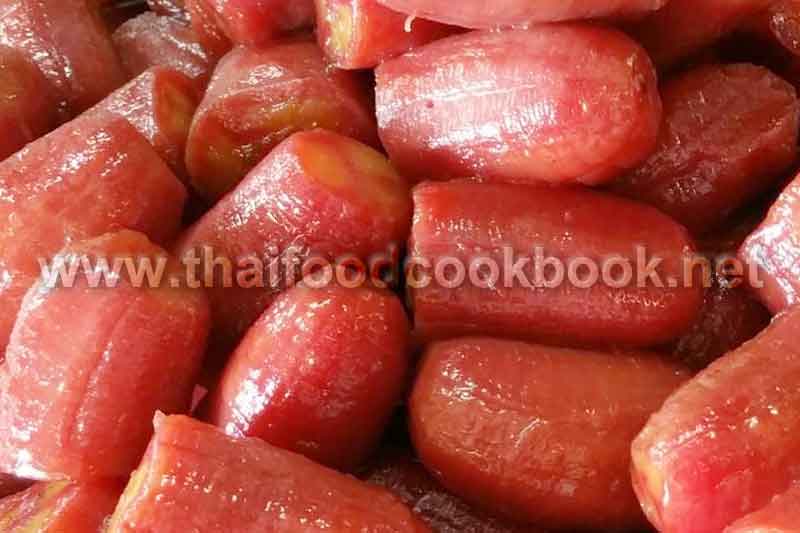Lod Chong in Coconut Milk (Lod Chong Nam Kati) – Traditional Thai Dessert with Creamy Coconut Aroma
Lod Chong in Coconut Milk (Lod Chong Nam Kati) is one of the most iconic Thai desserts loved for its sweet fragrance, refreshing pandan flavor, and silky coconut milk that balances sweetness with aromatic creaminess. Many people who try making this dessert at home often struggle with achieving a smooth and chewy texture, having coconut milk turn watery, or the pandan strands breaking apart easily. These challenges usually come from using the wrong technique, low-quality flour, or coconut milk that lacks richness. However, with the correct preparation steps and high-quality ingredients, it is possible to recreate the authentic taste found in traditional Thai dessert shops. If you want to explore more Thai dessert recipes similar to Lod Chong Nam Kati, visit authentic Thai dessert recipes for further inspiration.
What Makes Authentic Lod Chong Nam Kati Special
The popularity of Lod Chong in Coconut Milk (Lod Chong Nam Kati) comes from its cultural value as well as its refreshing taste. This dessert is often served with shaved ice, making it an excellent choice for hot weather. The pandan noodles are soft yet slightly elastic, while the coconut milk adds aroma and a creamy finish. Because of its high demand in local markets and night markets in Thailand, the dessert has become widely recognized by foreign visitors as well. According to TasteAtlas, this dessert is also listed as one of the most iconic cold Thai sweets loved for its tropical flavor profile.
Ingredients for Lod Chong in Coconut Milk
To create the perfect Lod Chong in Coconut Milk (Lod Chong Nam Kati), you will need fresh pandan leaves, rich coconut milk, palm sugar syrup, and a combination of rice flour and tapioca flour to achieve the right texture. Below is a list of ingredients separated by the pandan noodles and the coconut milk base.
Ingredients for Pandan Lod Chong
- 1 cup rice flour
- 1/2 cup tapioca flour
- 1 cup pandan juice (blend pandan leaves with water and strain)
- 2 tablespoons sugar
- 1/2 teaspoon salt
- A bowl of ice water for shaping the noodles
Ingredients for Sweet Coconut Milk
- 2 cups thick coconut milk
- 1/2 cup palm sugar (or coconut sugar)
- 1/4 teaspoon salt
- 1 pandan leaf (tied into a knot)
Step-by-Step Preparation of Lod Chong Nam Kati
Creating a perfect bowl of Lod Chong in Coconut Milk requires patience and correct proportions. Each step must be carefully executed to obtain the smooth pandan noodles and creamy coconut base. Below is a step-by-step guide that even beginners can follow easily.
How to Make Pandan Lod Chong Threads
- Mix rice flour, tapioca flour, sugar, and salt in a bowl.
- Slowly add pandan juice and stir until smooth with no lumps.
- Cook the mixture over low to medium heat, stirring constantly until the dough thickens and becomes glossy.
- Transfer the hot mixture into a piping bag or a Lod Chong mold.
- Press the mixture through the mold into an ice water bowl to form noodles.
- Let them rest in the cold water until firm, then drain.
How to Prepare the Coconut Milk Base
- In a saucepan, add coconut milk, palm sugar, and salt.
- Stir gently over low heat until the sugar dissolves completely.
- Add a pandan leaf for fragrance.
- Do not boil — just warm the coconut milk to maintain its creamy texture.
Serving and Presentation Tips for Authentic Flavor
Once the pandan noodles and coconut milk are ready, combine them in a serving bowl along with crushed ice or shaved ice. This enhances the refreshing sensation and mirrors the way street vendors serve it in local Thai markets.
- For extra fragrance, drizzle a bit of thick coconut cream on top.
- Serve immediately to preserve the chewy texture.
- Add jackfruit strips or toddy palm seeds for additional sweetness.
Tips for Perfect Texture and Aroma
- Use freshly squeezed pandan juice instead of artificial essence.
- High-quality coconut milk produces a richer and creamier taste.
- Do not overcook the pandan dough or it will become rubbery.
Dietary Variations
- Vegan-friendly: Already naturally dairy-free.
- Gluten-free: Made from rice flour and tapioca flour.
- Lower sugar version: Use stevia-based palm sugar alternatives.
Why Lod Chong in Coconut Milk (Lod Chong Nam Kati) is Loved Worldwide
This dessert gained international admiration thanks to its refreshing texture, combination of pandan fragrance and coconut aroma, and its cultural roots in Thai culinary heritage. It is often compared to other Asian shaved ice sweets, but what makes Lod Chong Nam Kati unique is its thick, creamy coconut milk that provides depth and authenticity to every spoonful. Traditional Thai dessert makers emphasize the importance of keeping the coconut milk rich and smooth to highlight natural sweetness rather than relying on excessive sugar.
The Cultural Significance of Lod Chong
Historically, Lod Chong Nam Kati was served during summer seasons or temple festivals in central Thailand. It later expanded to become a staple in dessert shops throughout the country. Because of its versatility and refreshing nature, it has also become a favorite choice for tourists exploring Thai food culture. Many travelers remember this dessert as a gentle introduction to traditional Thai sweets before trying stronger flavors such as durian sticky rice.
Pairing Suggestions
- Excellent with shaved ice topped with coconut cream.
- Pairs well with tropical fruits such as jackfruit and young coconut.
- Also enjoyed alongside other cold Thai desserts for variety.
Common Mistakes to Avoid When Preparing Lod Chong Nam Kati
Making this dessert at home can be rewarding, but there are frequent mistakes that can impact flavor and texture. Below are key points to be careful with during preparation.
- Using thin coconut milk makes the dessert watery.
- Skipping ice water when shaping noodles results in weak texture.
- Boiling the coconut milk causes separation and loss of creaminess.
Storage and Freshness Tips
- Store pandan noodles and coconut milk separately in the refrigerator.
- Best consumed within 24 hours for maximum freshness.
- If serving later, add ice only when ready to eat.
How to Elevate the Flavor
- Toast a bit of coconut milk for a smoky note.
- Add pandan-infused syrup for stronger aroma.
- Serve in chilled bowls to improve presentation.
Summary of Making Lod Chong in Coconut Milk (Lod Chong Nam Kati)
Lod Chong in Coconut Milk (Lod Chong Nam Kati) remains a timeless Thai dessert because of its refreshing taste, authentic ingredients, and cultural value. With the right pandan extraction, carefully prepared coconut milk, and correct shaping technique, anyone can recreate this beloved Thai sweet at home. Its creamy, aromatic nature continues to make it a favorite among locals and international food lovers alike.

